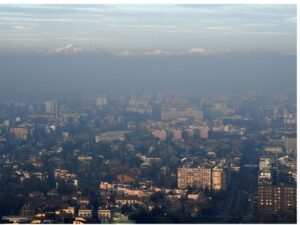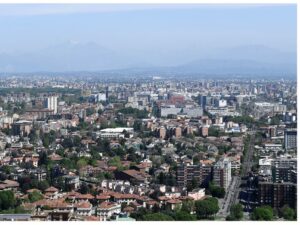Effects of pollution on the environment
No one likes to breathe air that is polluted. But the question is, are we making sensible efforts to stop pollution so that its adverse effects on the environment can be controlled? Look at any ecosystem and there could be multiple forms of contamination—streams full of toxic chemicals from industrial processes, rivers overloaded with nutrients from farms, trash blowing away from landfills, city skies covered in smog. Even landscapes that appear pristine can experience the effects of pollution sources located hundreds or thousands of miles away.
The reason why this topic is interesting for me and still existent in the world is that this topic has always been in the news because smog hanging over cities and inside the home, keep on posing a major threat to the climate. Air quality is directly linked to human activities, the earth’s climate, and ecosystems globally. Many of the drivers of air pollution (i.e. combustion of fossil fuels) are also sources of CO2 emissions and other short-lived climate pollutants, such as ozone and black carbon that greatly contribute to climate change. However, as we all have witnessed, how Covid-19 has changed the world in many aspects, most of the cities of the world had undergone sleeping mode due to the strict lockdown rules. Since the lockdown has come into practice, there has been a very limited movement of people resulting in almost negligible use of vehicles in the cities along with restricted industrial activities. Hence, most of the cities have experienced improved air quality indexes as compared to previous data where the pollution levels were skyrocketing due to pollution levels. The improved air quality and the possible associated health benefits may be the only light in the “darkness” caused by the negative impacts of the COVID-19 pandemic. I would like to share a picture depicting the comparison of the effect of pollution on Milan, Italy on different dates to show the difference between the air quality.


A remarkable difference can be observed by just having a glance at the photos. Also, there has been a history of the effect of air pollution on the environment. Pollution is not a new problem. It already has a long and complex history. Athens and Rome were the first ones who alarmed people about the consequences of pollution. However, the major reason for the poor air quality index was industrialization due to the establishment of a number of factories all around the world. Despite the tangible nature of this form of air pollution, early laws to control it were generally weak and ineffective-regardless of its high socio-environmental costs-reflecting the importance of coal-fuelled steam power to economic growth. There has been evidence that proves that developed countries have overcome the problems of pollution but the developing countries are still facing a lot of problems due to its harmful effects. Environmental problems that are running globally need to make some strong decisions if some of the nations are expecting the situations to improve. However, there are few controversies as well because many researchers believe that air pollution is not a problem.NPR interviewed Natalie Mahowald, a climate researcher at Cornel University to state pollutants like aerosols even produce positive effects on the environment. The aerosols come from smokestacks and include soot and other compounds.NPR said they reflect sunlight into space, stimulate clouds to keep humans cool and influence the amount of carbon dioxide taken by plants on land and sea.
We all get into inquiry because of our desire to see and understand differently, with better insight and creative possibilities of interaction, the particular situation, and people that one encounters in one’s life and one’s own reaction to them. ( Heesoon Bai, p-47)There are a variety of questions that can arouse curiosity and inquisitiveness related to this topic in a child which are as follows:-
1.Is air pollution a priority issue?
2.Is air pollution an old problem?
3.Where does air pollution come from?
4.Is air pollution mainly a local problem or can it travel long distances?
5.How does air pollution affect food, crops, forests, and diversity?
6.Does air pollution causes other environmental degradation?
7. Has air pollution been solved anywhere?
8.What actions can governments take to improve air quality?
9.What is the role of air quality monitoring in air quality management?
10.What actions can businesses and industry take?
11.Can you improve local air quality? How?
12.Are air pollution and climate change connected? How?
12.How is air pollution connected to sustainable development?
15.Is clean air a human right?
16.Is there a link between poor air quality and worse health outcomes due to covid-19?
17.What are the sustainable practices that can be adapted to improve the environment?
I can completely relate to the effect of pollution on our surroundings. A point source is the single large emitter into the environment. There has been a significant difference in the air quality index when there was almost very little activity. However, the coronavirus tears around the world, it’s exploiting our biggest weaknesses, from creaking health care systems to extreme social inequality. Its relationship with one pervasive and neglected problem, however, is more tangled. Air pollution has intensified the pandemic, but the pandemic has—temporarily—cleaned the skies due to the lockdowns. Along with that, most importantly efforts must be taken to teach school children about global warming and climate changes due to it more extensively. Love and affection about nature should be created amongst them, for that frequents trips and visits to natural places are important. It is high time to change our mindset to protect our mother nature and for this noble cause, it is expected that every individual should take his/her share of responsibility. It is our job to provide our coming generations the best, safe and healthy nature.